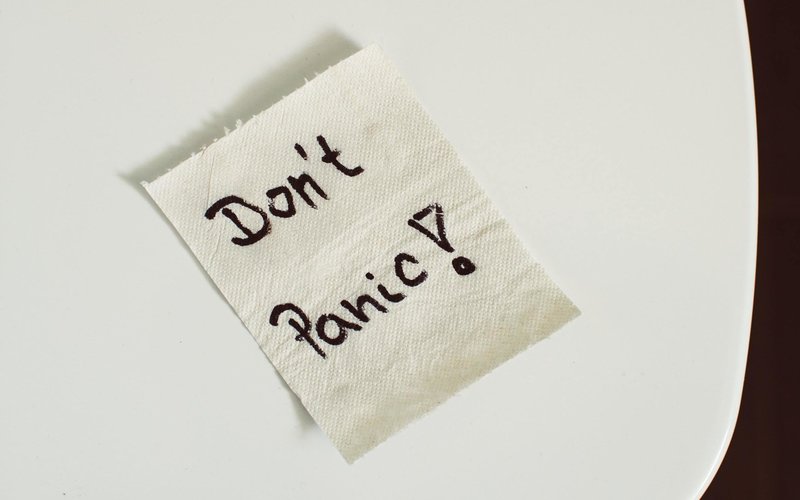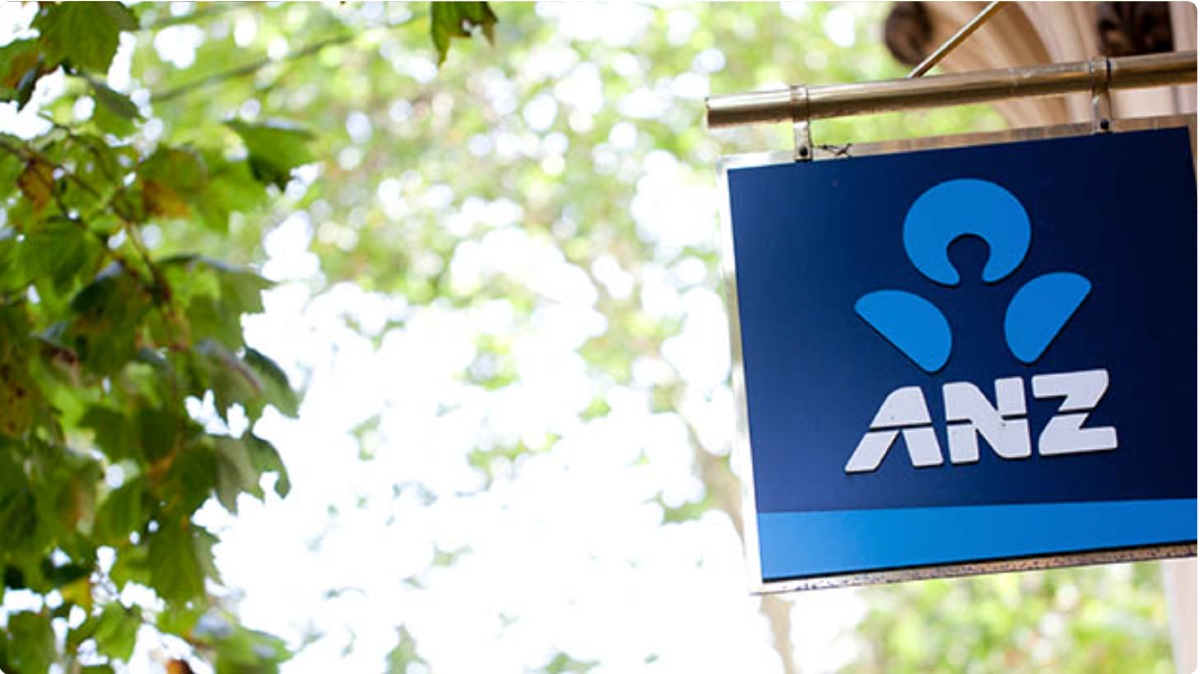Right off the bat, we had the potential of a wide scale war breaking out due to good old geopolitical tensions, right at the same time as some of the worst bushfires our country (or indeed any country) has ever seen. Remember those?
Now, we’re faced with the reality of quarantining ourselves inside our homes as the globe is swept by a brutal and potentially deadly pandemic, with hundreds of thousands of infections and thousands of deaths already occurring around the world.
All of this (but mainly the virus) stuff is also going to, in all likelihood, lead us into a recession, or even a possible depression, with the unemployment rate tipped to hit 11% by June.
Oh and just to rub salt into the wounds, there's no live sport to watch, unless you count marble racing as a sport.
These are very scary times we’re living in, and many people are finding their futures uncertain:
- Some have been let go from their jobs
- Some have been forced to take a pay cut
- Others have had to make great sacrifices in their lives, like postponing overseas moves or suspending their university studies
A big question so many of us are, or should, be asking ourselves is: Am I going to be able to cope with all of this financially?
Some of us will emerge relatively unscathed, but scores of others won’t be so lucky. That’s why we’ve compiled this guide detailing ways you can save money sensibly during the worst health crisis in 100 years, and the worst financial crisis since at least the early 90s.
We’ve called upon a number of experts in their fields to give us some of their tips on how to save during COVID-19.
Other useful COVID-19 guides and news:
- The banks offering special term deposit rates in the midst of COVID-19 crisis
- Banks to defer loan repayments for six months due to coronavirus crisis
- Morrison Government announces six-month moratorium on rental evictions
- 'Job Keeper' allowance: Details of $1,500 coronavirus wage subsidy revealed
- What stimulus is the Government offering to small businesses?
- Working from home due to COVID-19? Here's what it means for your tax return
- How will your credit score be affected by COVID-19?
- Health insurers to suspend April price hikes during COVID-19
- How to actually receive your stimulus payments
- Should you withdraw from your superannuation during COVID-19?
- What happens if your bank or lender goes bust?
- Does my insurance cover me for a pandemic?
- How to get a refund for a flight or event cancelled due to coronavirus
General savings tips
Life is very different now from what it was even a month ago.
In this present time, there are a few things you can do from your own home that can save you money now and in the future.
Cut out the non-essentials
Let’s face it, most of us are (or should be) stuck inside our homes for 99% of the time we’re awake, so that right there means there’s a lot of fat you can trim from your everyday spending. And unfortunately, this also means you have to make some sacrifices.
She’s on the Money Podcast host Victoria Devine says now is the time to live more frugally.
“In these times a $10 bottle of wine tastes just as good as a $30 bottle,” Ms Devine said.
“If you're staying in your house all week you don't need new clothes or designer shoes.
“We don't know how long this pandemic will last so now is the time to hold on to your money because it might need to sustain you for longer than usual.”
For example, one big thing you might end up paying for is delivery food, such as Uber Eats, which can be very expensive. Buying essential foods such as rice, pasta and toilet paper and cooking long-lasting freezer meals will be much more financially-efficient.
Get on top of your bills
While stuck inside your apartment, there’ll be a few things you might still be paying for that you can no longer use. Such things should be cancelled, or you should ask the provider if they can postpone or suspend your payments until you can use them again. Many of them will be more than willing to comply with your request.
“This is not the time to still be paying for that gym membership you never use or to have money coming out of your account that's not essential,” Ms Devine said.
“The RBA has talked about an economic rebound in the second half of this year which is a possibility but the economy should recover by 2021, until then it's time to tighten the purse strings.”
If you are struggling to pay essential bills, like utilities or your mortgage, there are subsidies and financial hardship provisions available: We’ll cover this in greater detail below.
Get refunds for cancelled flights or events
As a result of COVID-19, many events, flights and other travel services have been cancelled, leaving many people wondering how to get their money back. And in most cases, you will be entitled to either a refund or some form of credit, according to the Australian Competition and Consumer Commission (ACCC).
"If events, flights or other travel services such as cruises are cancelled, the ACCC expects refunds or other remedies such as a credit note or voucher will be offered in most circumstances", the consumer watchdog said.
If you can no longer go to something you’ve paid for, it doesn’t make much sense to not at least try to get your money back for it.
We have a complete guide on how you can do that here.
Lower your home loan repayments or refinance if you can
Australia’s official cash rate has been cut five times since mid-2019, from an already record low of 1.50% to 0.25%, and it’s unlikely to go down from there. These five cuts included an extraordinary second March rate cut - the first time in our history that the cash rate has been cut twice in the same month.
This has caused both fixed and variable home loan rates to tumble to levels never seen before, with many rates in the mid-2% p.a. mark. Some fixed home loan rates are even close to starting with the mythical '1'.
But if you’re a variable home loan customer, there’s a chance you haven’t actually had your repayments reduced, which might not be a bad thing necessarily (we have an entire article dedicated to whether or not you should lower your home loan repayments here). Not every bank automatically cuts your home loan repayments to the minimum, which long term would mean you pay off your home loan faster and save more in interest costs, but short-term, you might need that extra money for these rainy days quarantined inside.
Let’s see how much you could reduce your monthly repayments by on a $400,000, 30-year home loan with P&I (principal and interest) repayments if, two years into the loan, your interest rate is cut from 4.00% p.a. to 3.50% p.a. and you drop your minimum home loan repayments accordingly.
|
Interest rate |
Monthly repayments |
Monthly repayment reduction (from 4.00% p.a.) |
|---|---|---|
|
4.00% p.a. |
$1,910 |
N/A |
|
3.50% p.a. (after two years of paying 4.00% p.a.) |
$1,802 |
$108 |
In this instance (and many home loan rates now are much lower than this by now), you’d have an extra $108 per month, which you can put towards feeding your family or paying your bills.
Some banks, such as the big banks, will automatically lower customers' minimum repayments in response to COVID-19, and other banks are doing the same, so contact your bank if you don’t want this to happen.
In a pure short-term savings sense, lowering your home loan repayments or refinancing to one with a lower interest rate could be an ideal choice, but keep in mind you could save more over the life of the loan by keeping your repayments higher than the minimum required.
Interest-only loans could work too
If you’re looking for some short-term relief, potentially at the cost of paying more longer-term, then you could refinance your home loan to interest-only repayments.
Interest-only (IO) loans are home loans which delay the repayment of the borrowed amount (the ‘principal’) for a fixed term, usually between three and five years. During this time, you only have to pay the interest costs, not the principal. This makes repayments much much cheaper over the interest-only period, and if you’re an investor, this makes your entire repayments tax-deductible (see the Australian Taxation Office for more info on this).
Read more on the pros and cons of interest-only loans here.
Get a better savings account
If you’re looking for a safe, no-nonsense place to store money, then a savings account could be a good option.
But you can’t just pick any one. Interest rates on savings accounts have fallen significantly thanks to the five Reserve Bank cash rate cuts since mid-2019, with most accounts barely offering more than 1.00% p.a.
With Australia’s annual inflation rate currently sitting at 1.80%, this means the funds in many accounts are theoretically going backwards in value.
But there are still a small number of savings accounts on the market that offer interest rates of over 1.80%, but many of these are bonus savings accounts which offer a bonus interest rate to customers that satisfy the various requirements each month (which can include making a deposit each month or making a number of transactions).
You could also consider using an introductory savings account, which is a savings account that has a much higher interest rate temporarily but reverts to a much lower rate after a few months.
Given the circumstances, having a higher interest rate for 3-6 months could be very beneficial, but you may want to switch to a new account at the end of the introductory period because you’ll then be earning little to no interest.
Get a savings account with good features
Savings accounts can also be useful for the many tools and features they come with too.
New neobanks such Up, 86400 and Xinja come with a swathe of handy financial tools to help you save, while the big banks such as Commbank, which have very modern banking apps, are also highly recommended on this front (although again, consider the interest rate too).
These tools can include anything from bill payment reminders, spending insights, or alerts when you spend too much on a certain type of purchase - all things that could come in handy during a financial crisis.
Up co-founder Dominic Pym told Savings.com.au such tools are now more important than ever thanks to the economic uncertainty we face.
“This changing economy demands better financial tools to help safeguard us from mistakes we might’ve had the luxury of making in the past,” he said.
“Up exists to help people get from a place where money is a cause of stress and anxiety to a place where they feel empowered and have greater control of their finances.”
Up provided some examples of how its in-app savings tools can help customers get through COVID-19:
The Upcoming spend feature
This is a feature that detects upcoming bills once you’ve paid them through Up, to help you understand what you’re likely to be charged and the commitments you have.
“Once you can see them all laid out in front of you, and you can see how much that will cost you in the future, you can make decisions about which ones you keep and which ones you can do without, particularly when times are tough,” Mr Pym said.
“You may also want to consider downgrading or pausing certain subscriptions if you don’t think you can go without them for long.”
For example, a feature like this could alert you to the fact that you're still paying for an old magazine subscription you haven’t used in months.
Spend categorisation
Up lets you create multiple different savings accounts that each carry the same interest rate, letting you save separately for different things like rent, groceries and emergencies.
Coupled with higher interest rates, a feature such as this could make a difference when bills come due.
“Creating savers for each of your upcoming bills and for different categories of expenses is a great way to put money aside for essentials. Using Up you can set up as many savers as you need, give each a target amount and emoji so you can track various expenses or goals,” Mr Pym said.
“Savers keep your money out of mind and ready for when it’s needed so you’re not left short. They can also be used like a priority list for your money.”
Automatic spending Insights
The latest banking apps can track your spending and send your personalised insights into how much you’re spending, and on what.
This too can show you what you’re spending too much on, giving you the opportunity to cut down.
“When you have a finite amount of money, understanding where you’re spending is key to making sure you’re using it wisely. Every transaction you make using Up is automatically categorised into a range of helpful budgeting categories you can use to track your monthly spending and see how you’re tracking versus the previous three months’ worth of transactions,” Mr Pym said.
“Tracking and comparing your spending is really useful if you find yourself needing to reduce your spending in a category and want to know how you’re tracking mid-month, or want to see how your spending habits change over time.
“Having this knowledge gives you the power to change the things you’re not happy with.”
These are just examples of one bank - there are dozens of them out there, some of which have really flash apps with tools and features that can make saving much easier.
And check out our list of highest savings account interest rates while you’re at it.
Consider a term deposit too
Like savings accounts, term deposit interest rates have taken a beating in recent years, with the average rate across all terms currently hovering at about 1.40% p.a. (around the same as savings accounts). But, like savings accounts, if you want a relatively risk-free place to store cash, a term deposit could be ideal.
However, with term deposits, you typically can’t take that money out without incurring a penalty, although a number of banks have recently waived that rule for existing customers.
Plenty of banks have recently announced special new term deposit rates for select terms, with some special offer rates as high as 2.10% p.a.
Term deposits are a relatively low-maintenance product and don’t typically charge any monthly or annual fees, as long as you don’t touch the money for the length of the term. If you're capable of doing so, then a term deposit could be a safe place to store your cash during these uncertain times.
Take control of your credit card
With so much uncertainty going around at the moment, now is not the time to have an unsuitable credit card, particularly if you’re facing financial pressure. Paying a high annual fee or exorbitant interest rates can really set you back, so now is as good a time as any to take control of your credit.
Here are three tips for getting the most benefit from your cards as possible.
Review your current cards and get rid of useless ones
It doesn’t make much sense to have an expensive premium or travel credit card at the moment, given the extensive travel restrictions barring almost everyone from leaving the country.
Credit card annual fees can exceed $750, and they tend to be higher on travel credit cards. So if you have an annual fee due soon on one of these cards, it might make sense to cancel it now since you probably won’t be going anywhere, and instead pick a card more geared towards our new way of life.
Use a balance transfer
The amount of credit card debt held nationally has plummeted nationally, but that could be set to change if more people are to rely on credit to get by in financial difficulty. If you do have credit card debt, now would probably be a good time to use a 0% balance transfer.
A balance transfer is the process of transferring existing credit card debts from one card to another, usually with a different provider. Balance transfer cards come with much lower interest rates – often as low as 0% – for a limited period of time, known as the honeymoon or promotional period.
The promotional period with the low interest rate can last for varying amounts of time. Some are as quick as three months, while there are now cards offering balance transfers for as long as 26 months. That’s more than two years to pay off a debt, interest-free! Just be wary of the revert rate: If you don’t fully pay off that debt in the time allocated, then you could be looking at a new interest rate of up to 24%.
Read more on balance transfers here.
Pay down your card balance
Avoiding paying interest is perhaps one of the most important things you can do during a crisis such as this, and having extra debts on top of other bills and financial hardships can send you broke.
Rather than having a fancy premium card with a high interest, try out one of the dozens upon dozens of cards with lower interest rates, many of which are well below 10% p.a.
Take advantage of financial assistance available
A huge number of people are going to be financially impacted by COVID-19, but the good news is you don’t have to tough it out alone. Federal and state governments, as well as private institutions themselves, have all made various concessions available to affected Australians.
“Everyone is going to feel the pinch and as more stimulus packages are announced there will be ways for households, business owners and people who have lost income to be able to get assistance from the government,” Ms Devine said.
Government assistance
On a Federal Government Level, Prime Minister Scott Morrison and his Cabinet have now announced three enormous stimulus packages, worth more than $200 billion combined:
- The most recent is the $130 billion ‘Job Keeper’ allowance, which gives eligible businesses $1,500 per employee per fortnight to make sure they can still pay them
- The second announced on 22 March includes an extra $550 per fortnight for welfare recipients, on top of regular welfare payments
- The first, announced on 12 March, included a one-off $750 cash payment to pensioners and welfare recipients such as those on Newstart. A second $750 payment, which was announced in the second stimulus package, will be issued from July.
If you’ve been stood down from your job or had your working hours reduced you could qualify for these payments - read the articles in the links above for more information on how to get these, or read our comprehensive ‘how to access your stimulus payments' guide.
In addition to these stimulus packages, the Morrison Government has also flagged various other changes, such as a moratorium on rental evictions (meaning you can’t be evicted if you’ve been impacted by COVID-19), or the ability to access up to $20,000 of your superannuation during the crisis.
Bank assistance
All lenders and banks have hardship assistance teams to help you during difficult times, and many of them have expanded these teams or relaxed their criteria to help customers impacted by COVID-19. Helping a customer get by short-term so they can remain a customer long-term is more beneficial to the bank than just turning you out without warning, so it is in their interest to try and help.
If you’re falling behind on your mortgage, for example, many banks are temporarily offering a six-month repayment deferral to ease short-term pressures, although interest will still accrue during this period which could make your mortgage more expensive in the long-run.
Other assistance offered by banks includes things like deferring credit card and personal loan repayments, and allowing term deposit customers to access their deposits early, penalty-free.
This is only possible however if you take proactive action and contact your bank to explain your situation.
"Unless individuals have made special arrangements with their credit provider, the system will act as per normal," Experian Australian & New Zealand General Manager Credit Services Tristan Taylor told Savings.com.au.
"If ever there has been a time to proactively manage your financial situation, it is now. Ensure you contact your financial service provider to discuss your options if you are concerned."
Savings.com.au’s two cents
Unless you’re one of the lucky few who’ll escape from this situation unscathed, the uncomfortable reality is you’ll probably have to make a change or two to your financial habits over the next few months. So, if you are under a bit of pressure money-wise, you could try doing the things we mentioned above:
- Get on top of your bills and spending
- Make sure you have a good place to store your cash
- Refinance your home loan or lower your repayments
- Get on top of your credit card situation
- Ask your bank for help or make use of the government’s stimulus packages where available
Above all, stay calm and help each other out, because there will be an end to all this madness before too long, and if you’ve saved diligently, you might be in a strong position when that time comes.

Ready, Set, Buy!
Learn everything you need to know about buying property – from choosing the right property and home loan, to the purchasing process, tips to save money and more!
With bonus Q&A sheet and Crossword!



 Bea Garcia
Bea Garcia
 Bernadette Lunas
Bernadette Lunas
 Harry O'Sullivan
Harry O'Sullivan

 Rachel Horan
Rachel Horan

